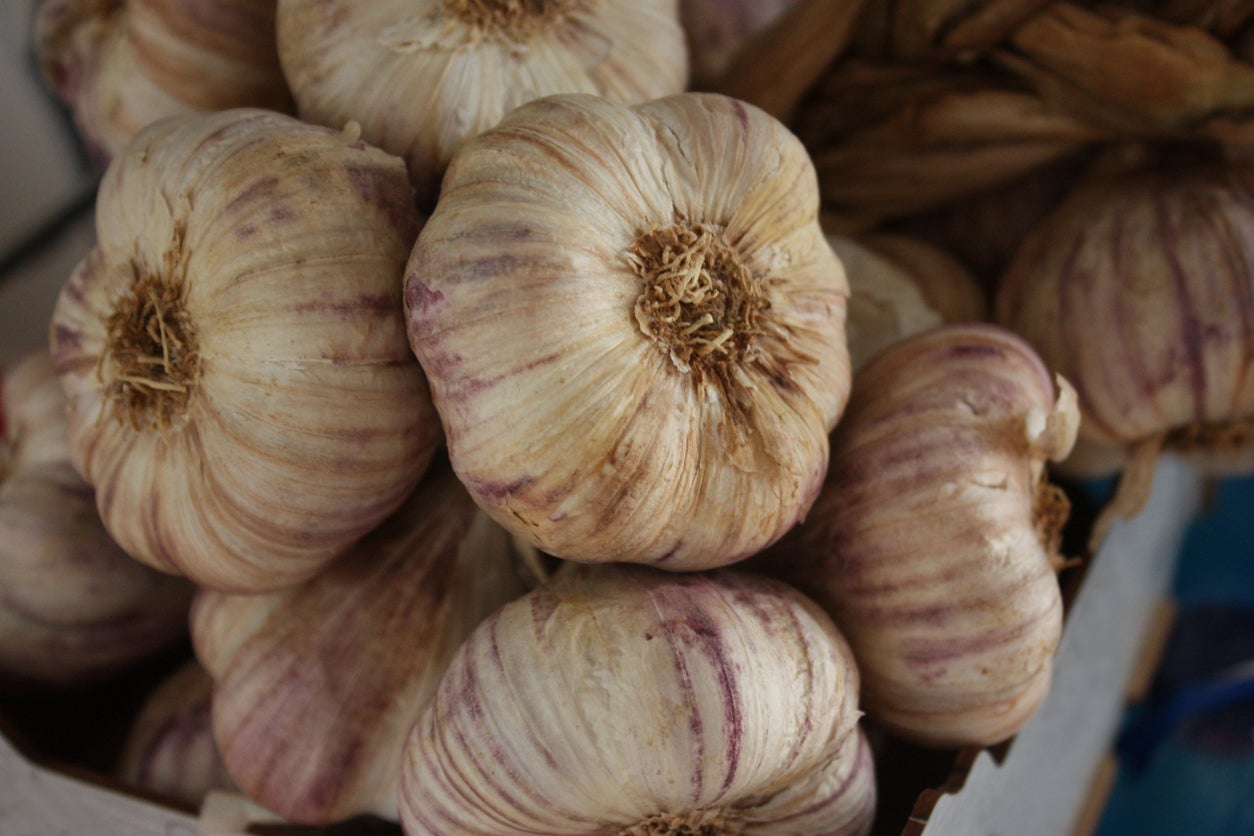What Is Polish Red Garlic – Polish Red Garlic Plant Growing Guide

Garlic is utilized in so many types of cuisine it is a must have for the garden. The question is which type of garlic to grow? That depends upon your palate, the length of time you want to be able to store it, and what you want to use it for. Take Polish Red garlic bulbs, for instance. What is Polish Red garlic? Keep reading to learn about Polish Red artichoke garlic and how to grow it.
What is Polish Red Garlic?
There are two major types of garlic: softneck and hardneck. Softneck garlic matures earlier and produces more cloves than hardneck types of garlic. Artichoke garlic is a subtype of softneck garlic that is named for the overlapping layers of cloves. Polish Red garlic bulbs are an artichoke type of garlic.
Polish Red garlic plants are very hardy and prolific producers. They sport good sized bulbs containing 6-10 fat cloves that are tan in color with a purple/red tint. The outer skin has a tint of purple/red and is easy to peel from the cloves.
Polish Red garlic is an early harvesting garlic with a rich, mild garlic flavor and a long storage life. The parchment wrapped bulbs also make great braiding garlic.
How to Grow Polish Red Garlic
Softneck garlic is harvested early in the summer and grows best in climates with mild winters and hot summers, although it can be grown as low as zone 5.
Polish Red gold garlic should be planted in the fall, at the same time spring flowering bulbs would be planted. It may also be planted early in the spring, but harvest will be later than fall planted garlic.
Before planting the garlic, the bulb needs to be separated into cloves. Do this about 24 hours or less prior to planting; you don’t want the root nodules to dry out. Peel the outer layers of skin off and gently pull the cloves apart.
Gardening tips, videos, info and more delivered right to your inbox!
Sign up for the Gardening Know How newsletter today and receive a free copy of our e-book "How to Grow Delicious Tomatoes".
Garlic is easy to grow but prefers full sun and loose, loamy soil. Just like tulips and other spring bloomers, Polish Red garlic should be planted pointy end up. Place the cloves 3-4 inches (7.6 to 10 cm.) deep and about 6 inches (15 cm.) apart.
That’s it. Now the anxious wait begins for this pungent stinking rose.

Amy Grant has been gardening for 30 years and writing for 15. A professional chef and caterer, Amy's area of expertise is culinary gardening.
-
 Grow ‘Karl Rosenfield’ Peony Plants For The Ultimate Frilly Border Beauties And Cut Flowers
Grow ‘Karl Rosenfield’ Peony Plants For The Ultimate Frilly Border Beauties And Cut FlowersFor frilly double magenta peony petals infused with a heady fragrance, grow ‘Karl Rosenfield’ peony plants. Here’s how to cultivate the ultimate plushy blooms
By Tonya Barnett
-
 10 Common Composting Problems That Can Spoil Your Garden Gold – Plus Easy Fixes
10 Common Composting Problems That Can Spoil Your Garden Gold – Plus Easy FixesLearn how to troubleshoot common composting issues before they ruin your stash – from bad smells and bugs to materials not breaking down as they should.
By Susan Albert